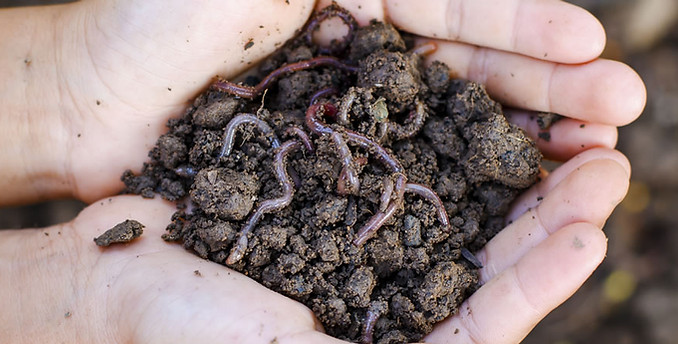
Another method of composting is known as Vermicomposting. This is the practice of using worms to do your composting. Worms are microorganism's that feed on your yard waste and fruit and vegetable trimmings, and decompose them for you. The goal of vermicomposting is to create the ideal environment for worms to thrive so they can efficiently decompose yard waste material. Worm composting is simple. You need a box, bedding (newspaper), yard waste, fruit and vegetable trimmings, and worms.
THE WORMS: Red worms, known as red wigglers or manure worms, are the best for vermicomposting. They thrive on organic material such as yard waste and fruit and vegetable trimmings. Red worms are not the same as earthworms or night crawlers, which need mineral soil to survive. One to two pounds of worms are needed to start a worm box. Worms reproduce very quickly. It is estimated that eight worms can multiply to 1,500 worms in six months. Once your system is established, there will be plenty of worms to help your friends get started. Red wigglers can be purchased at local bait shops, from worm farms, or by mail order. Search online using the keyword “VERMICOMPOSTING” or “WORM COMPOSTING.”
HARVESTING COMPOST FROM WORMS: Harvesting worm compost is very easy. Simply feed one end of the box for a week or more. The majority of the worms will migrate to that side of the box. Scoop out two-thirds of the worm castings from the opposite end and put fresh bedding in its place. Start burying food waste in the new bedding, and the worms will migrate back.
DO FEED YOUR WORMS
Coffee grounds
Coffee filters
Bread
Fruit trimmings
Vegetables trimmings
Small plant materials
Tea leaves with bags

DON'T FEED YOUR WORMS
Bones
Citrus peels
Dairy
Fish
Greasy foods
Peanut butter
Pet litter/feces
Salad dressing
Oil



